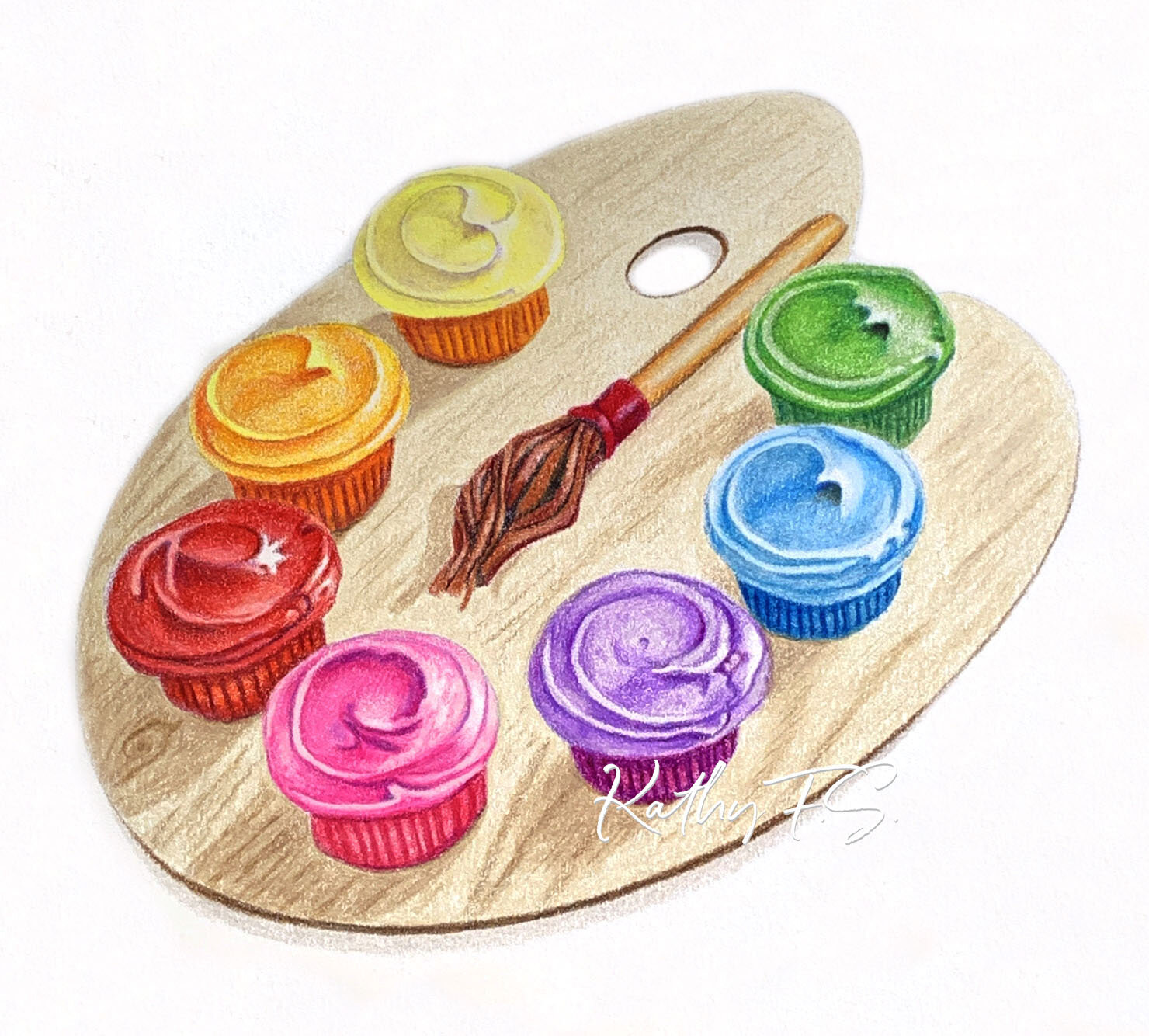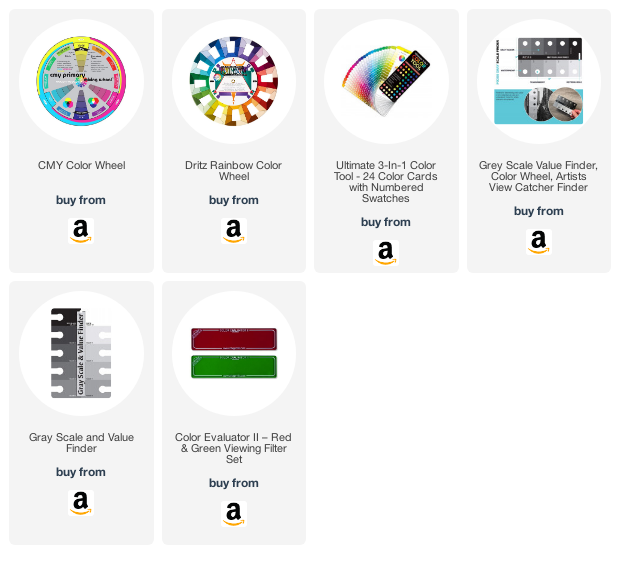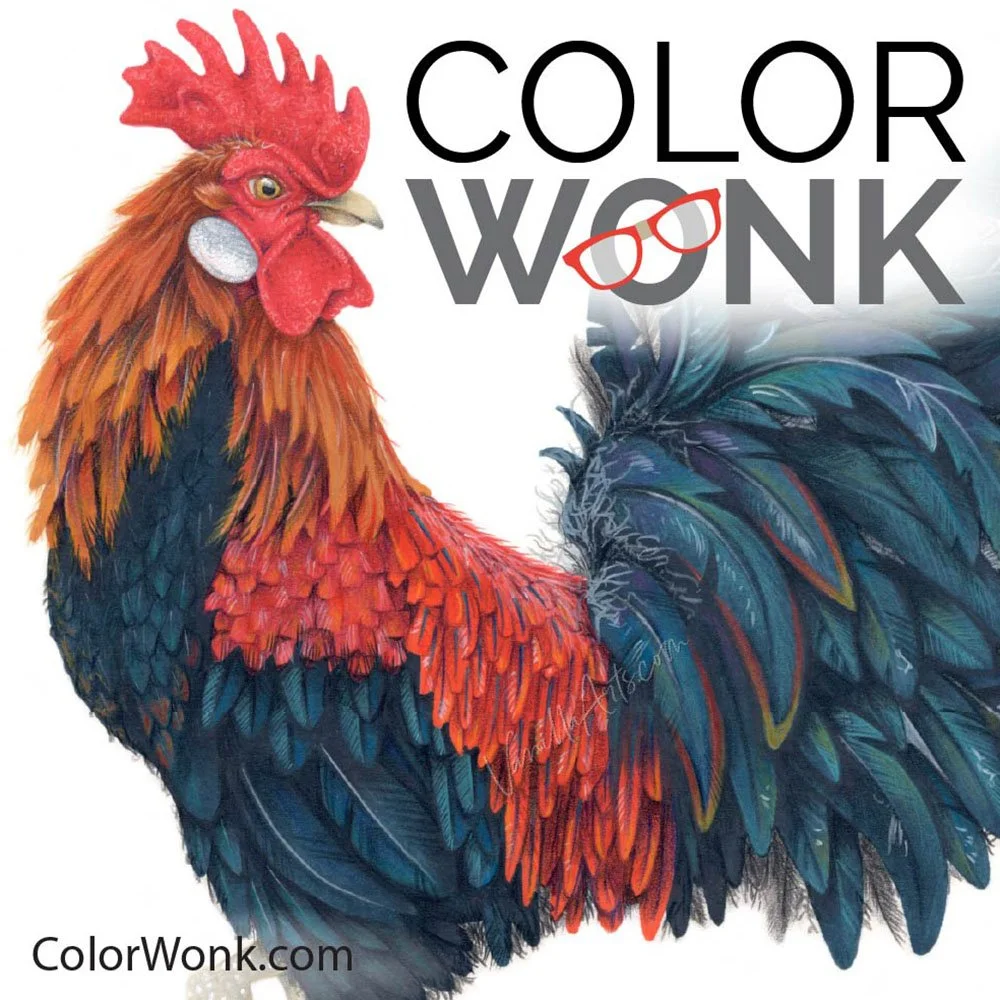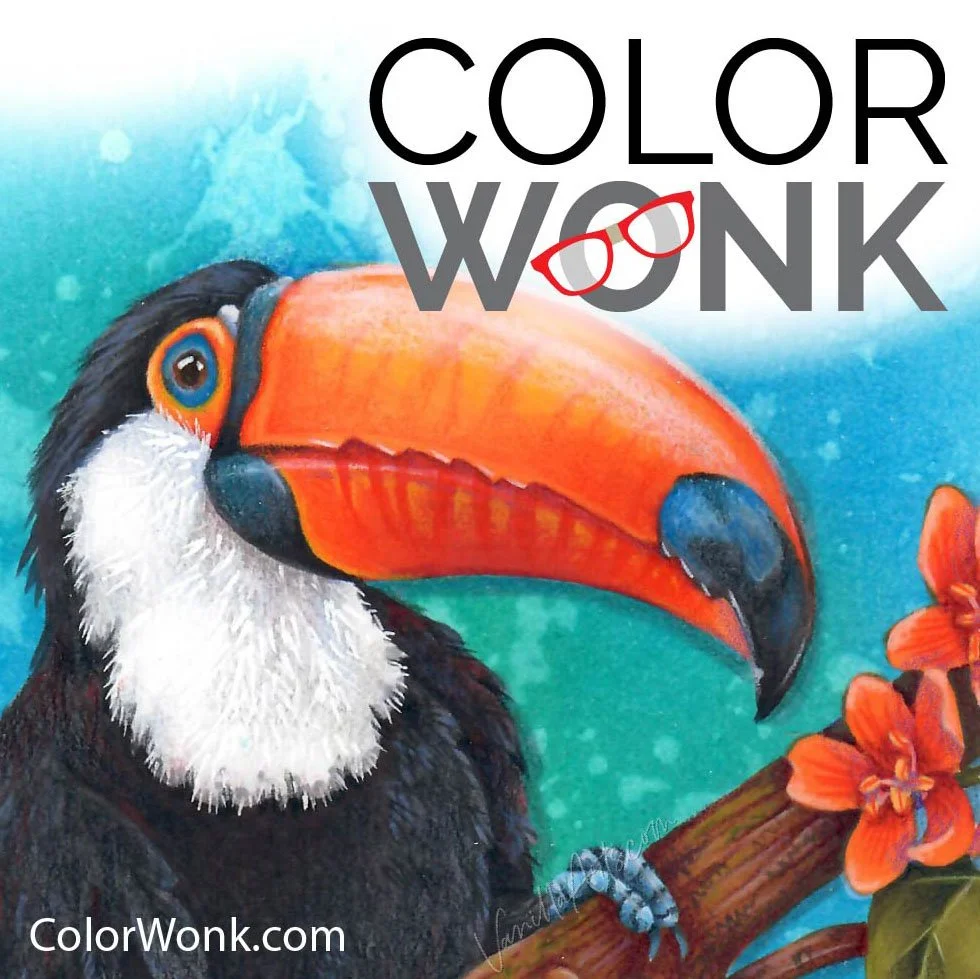Tools On My Desk: Color Wheels and Useful Color Tools (Copic Marker, Colored Pencil)
You have a color wheel, right?
Yeah, we all have one or two of they lying around… somewhere.
When you first get serious about coloring better with Copic Markers or colored pencils, you buy a color wheel.
Because hey, all artists use color wheels so you thought you should have one too!
So you played with it for 10 minutes, couldn’t see what the fuss was about, and tossed it in a drawer where it sits until the next artist mentions a color wheel. Then you repeat the cycle. You ponder over it, then you hide it. Ponder, hide, ponder, hide.
Right?
We all have a couple of color wheels or tools because we think we’re supposed to use them.
But we don’t actually ever use them and to be honest, we don’t understand why anyone would.
Pssstttt…
Maybe the reason why your color wheel doesn’t seem useful, is because you’ve got wrong wheel?
Now before you get all excited, THIS IS NOT AN ARTICLE TO TEACH YOU HOW TO USE A COLOR WHEEL OR ANY OTHER COLOR TOOL.
I can’t do that in one article. Have you seen color theory books? Whoa baby, that’s some intense reading! I can’t summarize 200 densely packed pages of text and charts into one itty-bitty blog article.
Instead, we’d like to get you started.
This is step one, a baby step. We’re making sure you have the correct tool for the task you want it to do. Because different wheels and tools do different things, and I’m pretty sure you didn’t realize that when you bought your color wheel.
Today, let’s look at the Vanilla Team’s favorite color wheels and color tools— what they use them for and why you might find it handy too.
We assume all artists use color wheels, yet you don’t actually use your wheel for Copic Marker or colored pencil projects. Each kind of color wheel does a different job— let’s make sure you’ve got the right tool for the task!
A little knowledge can go a long way!
Here’s a Vanilla Arts article from the Studio Journal Archive that is a wealth of information on color wheels and how to use them to create a color palette for your next project.
Cupcake Crazy
Kathy, guest author of the Computer for Colorers series here at Vanilla Arts loves to color colorful color. Add cupcakes plus the required tasty research? She’s all in!
Kathy used Prismacolor Premier pencils for this delicious color wheel.
Ever see a Vanilla Workshop where you love the project, just not the color scheme? Why not use your color wheel to personalize the color palette to your taste? Here are some workshops that could look amazing in a different color schemes:
The rest of this article contains affiliate links to trusted retailers like Dick Blick and Amazon.
Vanilla Arts Company is a participant in the Amazon Services LLC Associates Program, an affiliate advertising program designed to provide a means for use to earn fees by linking to Amazon.com.
The Vanilla Team’s Favorite color wheels:
Again, let’s repeat: We can’t teach you to use the following color wheels and tools in a short article.
Instead, we’re telling you which tools the Vanilla Team uses most, what we use them for, and why we love them.
From there, you can look at your own wheels and tools to see if they’re meant to do the job you want them to do.
WARNING: The top selling color wheel in the U.S. is completely useless for Copic Markers, colored pencils, and watercolor.
Not kidding. That’s why I’m willing to bet that most of you own the wrong color wheel.
Which color wheels do we use most?
1. CMY Primary Mixing Wheel: CMY stands for the three primary colors for coloring— Cyan, Magenta, and Yellow.
I know, you thought the primary colors were red, blue, and yellow. But that’s an additive color approach which doesn’t work for transparent color like Copics or watercolor. Don’t believe me? Open your computer printer. Do you see any red ink cartridges in there?
You can mix red ink by combining magenta + yellow.
If you’re using an RYB color wheel, it’s giving you a warped look at the color wheel. It over-samples orange and doesn’t give enough space to the cool side.
Copic Ink, watercolor, and even colored pencil are best calculated with a CMY wheel.
The CMY Primary Mixing Wheel is used by the entire Vanilla Team. It shows how to form secondary and tertiary colors from the three primary hues. It also illustrates tints, tones, and shades of the 12 primary, secondary and tertiary colors on the wheel. The backside of the wheel includes color selections by complements, split complements, triads and tetrads to help create your own project color palette.
2. Dritz Rainbow Color Selector Color Wheel: This wheel is recommended with reservations from Amy because it is not a CMY wheel and thus over-samples reds and oranges.
This is a wheel developed for quilters, but Kathy finds it useful for coloring.
What makes this color wheel different from traditional wheels is the 12 windows that are surrounded by six values of each hue. Kathy appreciated this wheel when she was training herself to see values in her projects. As a new colorer, it was much easier for her to identify values in color versus shades of grey.
3. Vanilla Arts Color Palette Picker: Designed by Amy for Vanilla Arts students and readers, this wheel is a simplification of the process she learned in art school and still uses in her projects and freelance work today.
Amy’s wheel is organized for Copic Markers, showing each of the Copic marker color families. The rotating dial helps you select color palettes for projects based on the complement and complementary accents.
Amy has distilled this wheel down to just the vital information needed for coloring, with a clean uncluttered presentation. You can read all about this color wheel here.
Useful Color Charts & Tools:
1. Sandy Allnock Copic Hex Chart: The Copic Hex Chart is an excellent aid to colorists and Amy highly recommends it to all her students.
This chart shows Copic Markers in visual chromatic order – not numerical. Colors are grouped for their similarity in hue and value which often contradicts marker cap numbers!
This tool teaches you to focus the actual color of the ink rather than coloring by number. If you’re just beginning your Copic collection, this chart can be used to find similar substitute markers for the colors you are missing. And for fans of traditional Copic blending in trios, one can develop unique combinations by locating your color and skipping one hex space over in any direction.
Amy says this is easily the best money you’ll ever spend on a Copic chart and the whole Vanilla Team uses it frequently.
Sandy Allnock’s Hex Chart can be found here. PLEASE purchase directly from Sandy rather than printing a pirated copy. A lot of testing and effort went into this chart and we need to support artists when they create valuable educational material!
2. Ultimate 3-in-1 Color Tool: Unlike a traditional color wheel, the Ultimate 3-in-1 Color Tool is a fan-deck style book of 2-sided color swatch cards. This tool was designed for fabric artists like quilters to make color selections quick and foolproof. It has since found a following in the graphic arts community as an inexpensive alternative to the Pantone decks.
This is a CMY tool. The front of each color card features a color hue plus that hue broken down into distinct 18 values/saturates. The front side also shows a few tones that can be made from a light, medium, and dark value. For computer people, the CMYK, RGB, and HEX codes are listed (although I’ve seen debate about the accuracy). The back of each card demonstrates analogous, complementary and triads for that hue which make for excellent color palettes.
The tool also includes red and green Value Finders (see more on this in the tools section below). Kathy and Amy are both big fans of this deck tool.
3. The Vanilla Undercover Swatch Series: Undercover is Elena’s pet project for the Vanilla Team, born from her love of the Vanilla Arts Underpainting Technique.
Undercover is a series of FREE Copic swatches, perfectly sized for storage at Pinterest but they also make a cute printable booklet. Every Thursday, Elena gives you photo inspiration plus the Copics she would use to color one area. Her underpaint colors selections are always interesting and educational.
If you’re looking to move beyond traditional Copic blending technique, Undercover is an excellent training guide PLUS inspiration to experiment on your own.
4a. Gray Scale & Value Finder: This is a standard tool borrowed from drawing classes at both the high school and university level.
Value is a measurement of how light or dark a color is. This tool is used to determine the values and intensities of colors within your photo reference and/or coloring project. Knowing this information will help you with both your color selections and identifying what colors need adjusting in your project.
This is a specialty tool which takes some training to use. Not recommended for beginning colorers but very handy for intermediate to advanced colorers who have not yet developed what Amy calls “Value Vision”.
4b. Kathy uses the paper version here. Amy has the much more durable acrylic version shown here (just ignore the RYB color wheel included on the lariat).
5. Color Evaluator II by Cottage Mills: Another value tool, many find this visual tool easier to understand than the Gray Scale Value Finder above.
These red or green acrylic strips allow you to look at reference photos or your project, discarding the actual color to see only values of lightness or darkness.
The Ultimate 3 in 1 Tool mentioned above has similar red and green tools made from a flimsy acetate and because they’re bound into the deck, they’re hard to use. Amy and Kathy both prefer the Cottage Mills version for their convenient size and extreme durability.
And yes, Kathy and Amy both borrow a lot of tools from the quilting world, so you may have seen these tools at fabric stores in your area. Hey, we use good tools no matter who they were designed for!
And what about the official Copic Charts?
It’s simple. We don’t use them.
The Copic Swatch cards help you keep track of your Copics. They’re handy as you build a marker collection, helping you to avoid purchasing doubles or suggesting other similar colors.
The Copic color wheel chart is simply the Copic numbering system laid out in a circle but it’s highly inaccurate and frankly, hard to read.
We don’t use them.
Our Favorite Color Wheels & Tools:
Vanilla Arts Company is a participant in the Amazon Services LLC Associates Program, an affiliate advertising program designed to provide a means for use to earn fees by linking to Amazon.com.



















